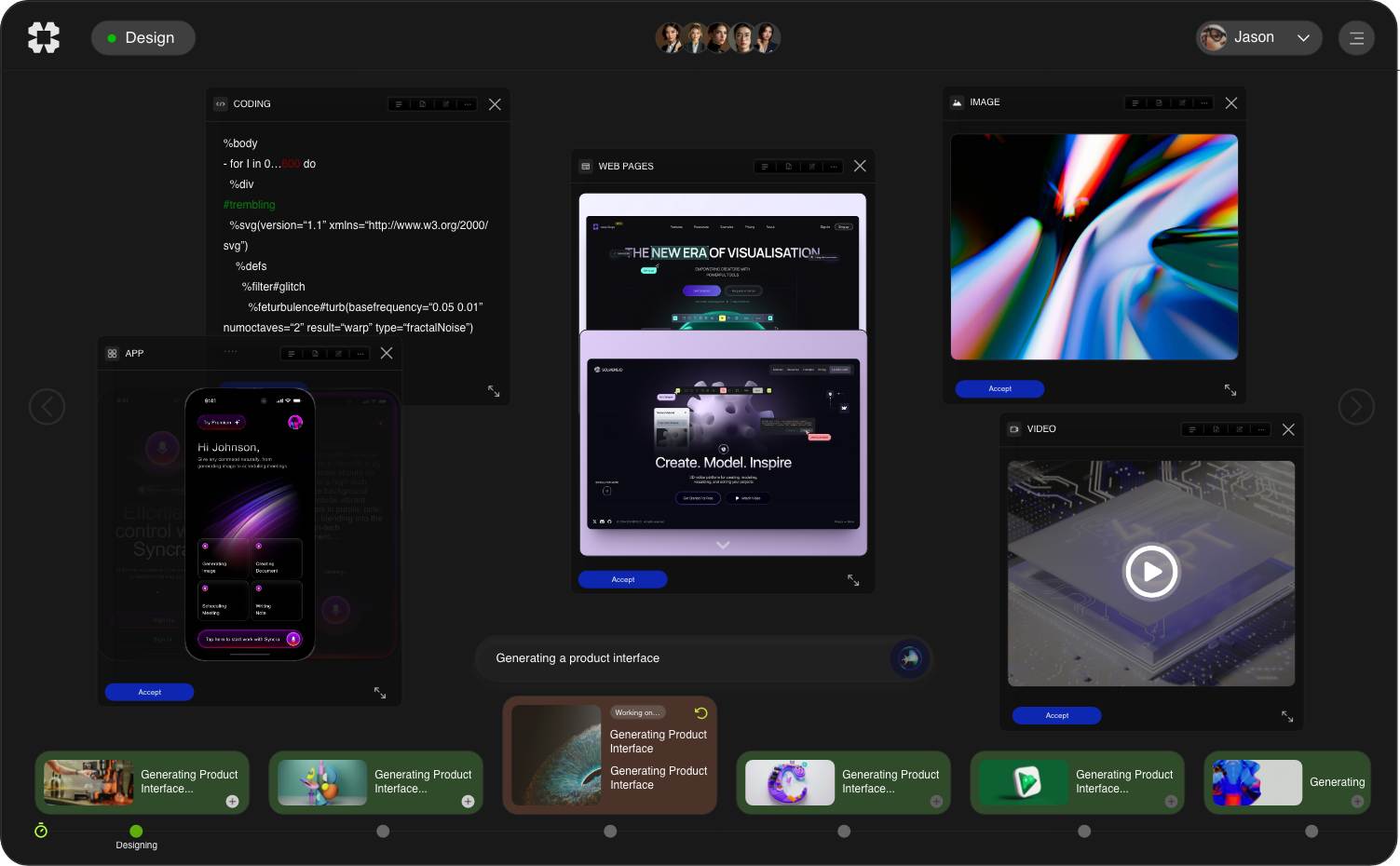In today’s rapidly evolving business landscape, organizations are increasingly seeking ways to leverage cutting-edge technologies to gain a competitive edge. Among these innovations, artificial intelligence (AI) stands out as a transformative force—particularly in data analytics, team management, and operational efficiency. This article dives into the world of AI-driven solutions, exploring the implications and applications of AI-powered data analytics, AI-powered virtual teams, and AI-driven operational insights.
.AI-Powered Data Analytics: Unraveling Insights from Big Data
The volume of data generated across industries today is staggering. In 2023, the global data sphere is expected to reach a staggering 175 zettabytes—a figure that is projected to continue growing exponentially. However, sifting through such vast amounts of information can present a significant challenge for businesses. Herein lies the transformative power of AI-powered data analytics.
AI-powered analytics tools utilize machine learning algorithms and natural language processing to analyze massive datasets efficiently. By identifying patterns and trends within data, these tools help organizations gain actionable insights that drive strategic decision-making. For example, companies can discern customer behavior, optimize marketing strategies, and forecast sales trends by employing AI tools that analyze historical data.
Leading organizations are adopting AI-driven data analytics solutions to enhance their business outcomes. According to a report by McKinsey, companies that integrate advanced analytics into their strategies realize a 126% increase in company performance and a 30% increase in marketing effectiveness compared to those that do not. This impressive statistic underscores the importance of AI-powered data analytics, which allows businesses to make evidence-based decisions rather than relying on intuition.
Moreover, industries such as healthcare are also benefiting from AI-powered data analytics, which helps in predicting patient outcomes and improving treatment plans. For example, by analyzing electronic health records, insurance claims, and patient demographics, healthcare providers can identify at-risk populations and tailor interventions accordingly. This not only improves patient outcomes but also enhances operational efficiency—reducing costs for both patients and providers.
.AI-Powered Virtual Teams: Redefining Collaboration in the Workplace
As organizations adapt to new working models, characterized by remote and hybrid work, the need for effective collaboration tools has never been more critical. AI-powered virtual teams provide a solution that enhances collaboration and communication among team members, no matter where they are located.
AI-driven collaboration platforms are equipped with virtual assistants and intelligent task management features, allowing teams to streamline workflows and improve productivity. For instance, tools like Microsoft Teams and Slack utilize AI to automate routine tasks, such as scheduling meetings and managing to-do lists, freeing team members to focus on more strategic initiatives. This innovative use of AI not only saves time but also ensures that team members are aligned and accountable.
Furthermore, AI-powered virtual assistants can analyze communication patterns within teams to provide insights that enhance both individual and team performance. For example, by studying email exchanges and chat histories, AI systems can identify collaboration bottlenecks, highlight frequently discussed topics, and even forecast when deadlines may slip. By offering these insights, organizations can implement proactive measures to improve team dynamics and project outcomes.
The effectiveness of AI-powered virtual teams has been highlighted during the COVID-19 pandemic, which forced many companies to reassess their collaboration strategies. For instance, research conducted by PwC found that 83% of employers believe that remote work is here to stay. As a result, AI technologies that facilitate efficient virtual teamwork are expected to grow in adoption, further bolstered by trends towards a more flexible and distributed workforce.
.AI-Driven Operational Insights: Streamlining Business Processes
In the quest for operational excellence, organizations are increasingly turning to AI-driven operational insights to identify inefficiencies and drive continuous improvement. AI technologies empower businesses to analyze their operations comprehensively, uncovering hidden patterns that can lead to enhanced performance and cost savings.
For example, AI algorithms can be applied to supply chain management to predict demand fluctuations and optimize inventory levels. By analyzing historical sales data, machine learning models can forecast trends, enabling businesses to make informed decisions regarding stock replenishment and resource allocation. This not only maximizes efficiency but also minimizes waste—a crucial consideration in today’s sustainability-focused market.
Another promising application of AI-driven operational insights can be seen in manufacturing. Smart factories leveraging AI technologies can optimize production lines by evaluating machine performance in real time. By detecting anomalies and suggesting preventive maintenance, AI systems can reduce downtime, improve product quality, and enhance overall production efficiency.
These capabilities demonstrate the substantial impact of AI-driven operational insights across various sectors. According to a study by Deloitte, 62% of organizations that implement AI-driven solutions in their operations report improved productivity and efficiency. By leveraging data analytics and operational insights, businesses can make informed decisions that shape their growth trajectory.
.A Case Study: Implementing AI Across Industries
One compelling use case illuminating the transformative impact of AI across industries is the global retail giant Walmart’s integration of AI-powered solutions. Walmart employs AI-driven data analytics to optimize its supply chain processes, forecasting demand and adjusting inventory in real time. The company’s use of AI extends to its workforce management strategy, maximizing labor efficiency by predicting staffing needs based on historical sales data.
In addition, Walmart has embraced AI-powered virtual teams to enhance communication and collaboration among employee teams, enabling remote employees to stay connected and engaged. This commitment to innovation has not only helped Walmart maintain efficiency but has positioned it as a leader in the retail space.
.A Future Vision: The Continued Evolution of AI Technologies
As organizations increasingly embrace AI-driven solutions, the future holds unlimited potential in the realm of data analytics, virtual teams, and operational insights. The successful integration of AI technologies will likely hinge on addressing challenges related to data security, privacy, and ethics.
As AI continues to evolve, businesses will need to stay vigilant in safeguarding sensitive data and ensuring responsible AI usage. This will require collaboration between industry stakeholders, regulatory bodies, and technology developers to establish best practices that prioritize transparency and accountability.
Additionally, organizations will need to foster a culture of continuous learning, equipping their workforce with the skills needed to maximize the benefits of AI technologies. By investing in training programs and upskilling employees, businesses can harness the full potential of AI and position themselves favorably in a rapidly changing marketplace.
In conclusion, AI-powered data analytics, virtual teams, and operational insights are rapidly transforming the business landscape, driving enhanced performance and strategic growth. As organizations continue to explore the possibilities of AI, they will undoubtedly uncover new insights and solutions that redefine their approaches—not only for their bottom lines but for the communities they serve.
Sources:
1. McKinsey & Company, “The State of AI in 2023.”
2. PwC, “Remote Work: A Permanent Solution.”
3. Deloitte, “AI and the Future of Work.”
4. Walmart Corporate Website, “Innovations in Supply Chain Management.”
























